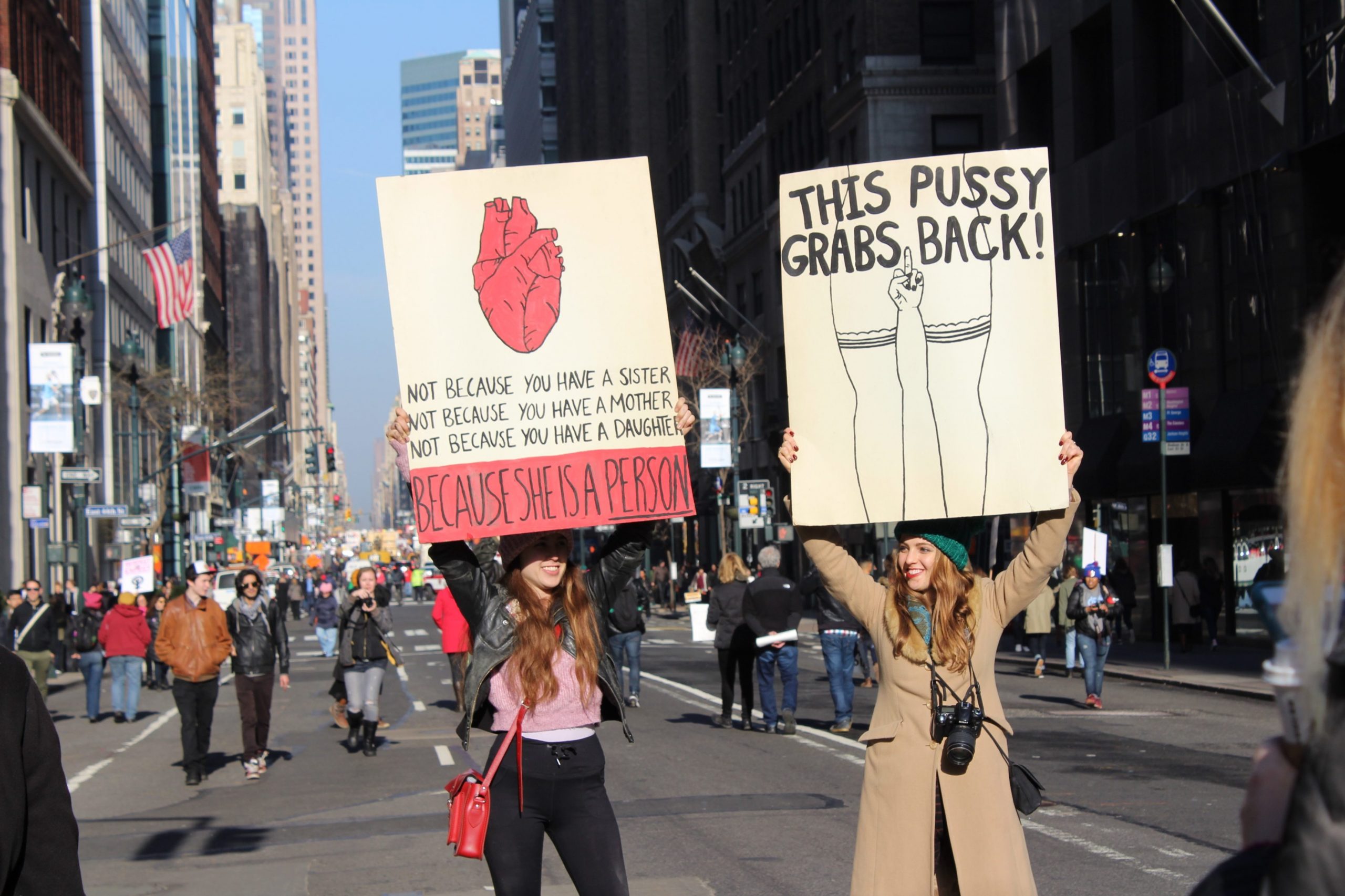
In the last six years or so, a new wave of feminism has taken the nation by storm, known as the “fourth-wave.” Starting circa 2012 with the booming popularity of social media as a platform to further the ideals, this new wave feminism has brought about a huge amount of women and girls and men proclaiming their feminism and refusing to be marginalized and silenced.
However, it is not perfect because, although the new wave is empowering and has the potential to bring about real change, there are some myths that need to be addressed, as well as some issues of continued exclusion.
Firstly, a common misconception about feminism is that it is solely for women; this is not the case. Feminism is for everyone–men and women alike. Feminism is about creating equality between men and women and those who do not fit the binary molds of society. Men can get involved by attending protests and marches, and on a smaller scale, by simply proclaiming to be feminists and treating girls with respect. It is not an emasculating thing to be a feminist.
“Thinking that way reinforces the binary that feminism is trying to break,” said Ansley Henson, a Women’s, Gender, and Sexuality Studies major at Georgia State. “Humans are not binary creatures, so why do we try to live that way?”
Secondly, another myth is that feminists reject traditionally “girly” activities, such as shaving and wearing makeup, and look down upon girls that do partake in such activities. In reality, feminists do not fit one mold and embrace all parts of being a woman. Feminists more than anything strive for equality and breaking stereotypes and barriers. By saying that feminists hate men is a prime example of what feminism is not.
It does not apply just to women; men sometimes do not feel they adhere to the binary expectations of what it means to be masculine.
“Just because you are attracted to women does not mean you have to be masculine,” said Henson. “All that is doing to reinforcing social constructs.” Everything is on a spectrum; gender, sex, sexuality–everything is not black-and-white. We, as humans in the United States and worldwide, have a tendency to abide by social constructs such as gender and virginity, where we are socialized to think a certain way about about those topics.
In addition, feminism is also about enabling people to have choices and giving people the rights to exercise those choices.
The premise behind girls not being feminists if they choose to shave is the idea that they are doing it to please a man. Often times, girls simply enjoy the feeling of a smooth leg as opposed to a hairy one. And there is nothing wrong with that. Men can shave their legs, too, if they so desire. It is not a direct correlation to anything.
The bottom line is, what you decide to do with your body is your choice, and your choices do not compromise your values.
Similarly, the concept that you cannot be a feminist if you choose to have children or stay at home with your children goes against feminist values and everything feminists fight for. Yes, women are perfectly capable of working just as well as a man in a job setting, but being a housewife is a full-time job as well. It is important to remember that, while white women were championing being able to work, black women had been working for centuries before and wanted the right to stay home with their children because they hadn’t had the opportunity to. Feminism is about not undermining the choices one makes; it is about allowing people to have those choices and the right to utilize their freedom in making those choices.
Additionally, another important aspect of feminism is intersectionality and inclusivity. Historically, feminism has had a white face behind it, and women of color have been pushed out of sight and had their issues deprioritized to make way for the white women. As Sojourner Truth said in her famous 1851 “Ain’t I a Woman?” speech, “That man over there says that women need to be helped into carriages, and lifted over ditches, and to have the best place everywhere. Nobody ever helps me into carriages, or over mud-puddles, or gives me any best place! And ain’t I a woman?” This quote alludes to the fact that feminism in America has not recognized black women as being women, too, and deserving a chance to be seen and heard.
That is the problem with mainstream modern feminism– it too often does not acknowledge the struggles women of color face and go through and it just looks at feminism through the eyes of white, middle to upper class women. Nine times out of 10, white women are the ones being represented when talking about sexual harassment in the workplace and and sexual violence, when the fact of the matter is, all women have experienced it, not just white women.
It is crucial to understand how racial inequalities are a counterpart to gender inequalities, as well as economic inequalities. Feminism is only effective and real if it is beneficial to everyone, not just the select few. So in this new wave, while equal pay and reproductive rights are important and deserve to be talked about, we must also remember who it is that will have access to these policies. We must remember who it is we are fighting for, and realize that if it what you are fighting for does not include everyone, then it is not feminism at all.
With that being said, there is something quite extraordinary about an entire generation of young girls growing up surrounded by all of this newfound courage women have to stand up for themselves. Despite its misgivings, which in time could be fixed, this new wave appears to have ignited a spark in young girls that most likely will not go out anytime soon.
